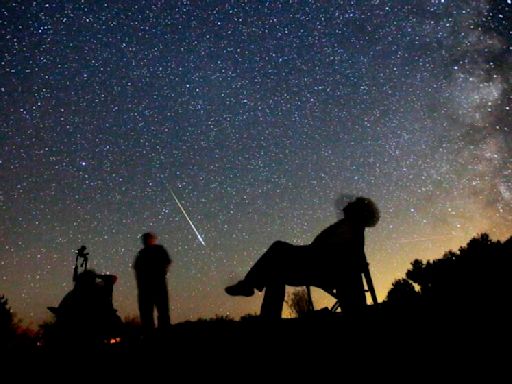Search results
A lunar eclipse is an astronomical event that occurs when the Moon moves into the Earth's shadow, causing the Moon to be darkened. [1] . Such an alignment occurs during an eclipse season, approximately every six months, during the full moon phase, when the Moon's orbital plane is closest to the plane of the Earth's orbit .
A concise summary of all lunar eclipses from 2021 through 2030 is presented in the table below. The first column gives the Calendar Date of the instant of greatest eclipse [ 1 ]. The second column TD of Greatest Eclipse is the Terrestrial Dynamical Time of greatest eclipse.
Jan 2, 2024 · Lunar eclipses occur when Earth positions itself between the sun and the moon and casts a shadow across the surface of the moon. They can only occur during a full moon...
Solar and lunar eclipses worldwide (1900 to 2199) with animations and maps of the eclipse path. Find eclipses in your location.
During a lunar eclipse, Earth gets in the way of the Sun’s light hitting the Moon. That means that during the night, a full moon fades away as Earth’s shadow covers it up. The Moon can also look reddish because Earth’s atmosphere absorbs the other colors while it bends some sunlight toward the Moon.
May 2, 2022 · What is a lunar eclipse? A lunar eclipse occurs when the Sun, Earth, and Moon align so that the Moon passes into Earth’s shadow. In a total lunar eclipse, the entire Moon falls within the darkest part of Earth’s shadow, called the umbra.
Anywhere from four to seven times a year, our Earth, Moon and Sun line up just right to create the cosmic-scale shadow show known as an eclipse. The Moon’s orbit around Earth is tilted relative to Earth’s orbit around the Sun.
Oct 13, 2022 · A lunar eclipse occurs when the Sun, Earth, and Moon align so that the Moon passes into Earth’s shadow. In a total lunar eclipse, the entire Moon falls within the darkest part of Earth’s shadow, called the umbra. When the Moon is within the umbra, it will turn a reddish hue.
During a lunar eclipse, Earth comes between the Sun and the Moon, blocking the sunlight falling on the Moon. There are two kinds of lunar eclipses: A total lunar eclipse occurs when the Moon and Sun are on opposite sides of Earth.
Lunar Eclipse Publications Online. The Five Millennium Canon of Lunar Eclipses contains figures and maps of every lunar eclipse from -1999 to +3000 (2000 BCE to 3000 CE). The supplemental Five Millennium Catalog of Lunar Eclipses contains 201 pages of tables giving details for each eclipse.

